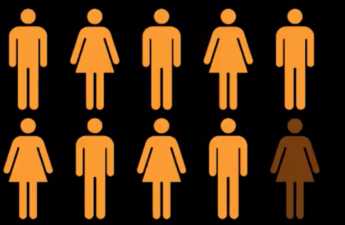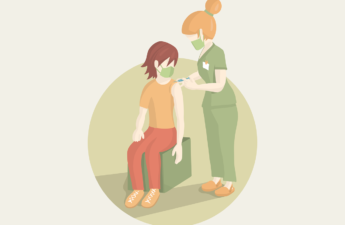
Coronavirus and Quarantine: a Q & A with our Health Officer
Hilary N. Karasz, Public Health – Seattle & King County
On Friday, January 31st, the United States federal government declared the novel coronavirus outbreak to be a public health emergency.
As part of the announcement, certain passengers returning from Hubei Province and other parts of China will be quarantined for up to 14 days.
To learn more about this quarantine, the purpose of quarantine for protecting public health and whether it can be effective now, we turned to Dr. Jeff Duchin, Health Officer for Public Health – Seattle & King County.
What is a quarantine and why is it used?
Quarantine is put into place to prevent the possible spread of an infectious disease from someone who may have been exposed to the disease but is not yet sick.
When people are quarantined, they are kept separate from others until they are out of the “incubation” period when they could get sick.
During that time, public health officials track their health so that if they do develop symptoms they can be separated from others and receive prompt medical evaluation and care.
The incubation period for novel coronavirus is thought to be 2-14 days.
Is quarantine different from isolation?
Yes. Quarantine is for people who are at increased risk for having been exposed to an infectious disease and could become sick and spread the infection to others, but who are not currently showing symptoms.
Isolation is used for people who are currently ill and able to spread the disease and who need to stay away from others in order to avoid infecting them.
What are the specifics of the quarantine the U.S. federal government put into place?
As of February 3rd, 2020, all passengers coming from China will be screened by Customs and Border Patrol. People with fever and respiratory illness will be isolated by a Centers for Disease Control and Prevention (CDC) medical professional and if warranted, will be transported to a hospital for a medical evaluation.
The federal declaration had included a mandatory quarantine of travelers who had been to Hubei Province in China within the last 14 days. That period ends on February 6 because the government of China had restricted travel from the province on January 23, 2020.
People who have been to parts of China outside of Hubei province in the past 14 days will be asked to quarantine themselves and monitor their health for 14 days before returning to school or work. Their local health department will provide support and guidance.
Additionally, the U.S. government is not admitting people who are not U.S. citizens, permanent residents or close family relatives, for the time being. We do not know how long the federal government will keep this travel ban in place.
Is quarantine an effective approach to limiting the spread of disease?
Quarantine can be an important and effective strategy to protect the community’s health in situations where a potentially serious disease may not be effectively controlled using less restrictive interventions (like preventive treatment or through symptom watch and isolation alone).
The current quarantine measures are intended to lessen and delay the impact of a potential novel coronavirus outbreak in the US during a time when there is much uncertainty about this disease and the course of the emerging outbreak.
Quarantine has disadvantages as well. It restricts individual autonomy, is inconvenient, complicated, and costly to administer. Quarantine may also have social and economic impacts and result in unintentional stigmatization of persons quarantined.
It is critical that quarantine is used judiciously, applied equally to all persons based on scientific evidence of increased risk, and not used indiscriminately.
Quarantine should be done in a way that minimizes its potential negative effects. People in quarantine should be in a comfortable environment and provided with day-to-day necessities. Their physical and psychological needs of people should also be met.
What about travel bans? I heard the U.S. government has banned entry to anyone other than U.S. citizens, permanent residents, and their close family members who has been in China recently.
The federal government has barred foreign nationals who have been in China in the last 14 days from entering the U.S. Large scale travel bans are controversial.
There are questions about the usefulness of travel bans in containing an emerging epidemic or pandemic above and beyond the core containment strategy of traveler screening and education, with isolation of ill persons at entry ports and contact tracing.
In addition, there are significant costs to interrupting the flow of people, commerce, goods and services as well as unintended negative consequences such as stigmatization and discrimination. Once an outbreak becomes more widespread across the globe, there is decreasing feasibility of maintaining a travel ban strategy.
The travel ban is intended to prevent or lessen the severity of an outbreak in the US, although the effectiveness of this strategy has not been established.
I imagine that the current ban will be time-limited and revaluated as we learn more about the outbreak and develop a long-term, evidence-based public health response including consideration of community mitigation strategies.
What are community mitigation strategies and how could they help?
Community mitigation strategies are important tools when the spread of an infectious disease is occurring broadly. That’s not the situation in the U.S. right now because the number of cases is still quite low and transmission person-to-person is very limited to household contacts of those cases.
However, if this outbreak causes widespread infections with many serious illnesses, based on what we learn about how the virus is transmitted certain community mitigation strategies might be recommended. These could include personal, community and environmental measures:
- Personal steps include staying home when sick, covering coughs and sneezes with a tissue, washing hands often or using hand sanitizer.
- Community measures include creating physical distance between people in settings where they commonly come in contact with one another (like workplaces); possibly temporarily closing schools where students, teachers, and staff members come in close contact with one another; and, modifying, postponing, or canceling large public events.
- Environmental measures include routinely cleaning frequently touched surfaces and objects.
What is Public Health – Seattle & King County’s role during the quarantine period?
Public Health and DOH will ensure that any passengers coming from China to Sea-Tac International Airport and persons under quarantine that have symptoms of coronavirus are promptly evaluated for possible novel coronavirus infection and tested if needed.
People who develop symptoms will be isolated during this time to ensure that exposure to others is minimized.
Public Health will support any King County resident who is under self-quarantine in the same way if they develop symptoms of coronavirus. If it is warranted, we will quickly get them evaluated by a healthcare provider, and tested if needed. We will make sure they are properly supported and cared for, so they don’t need to leave their residence.
Did this federal quarantine declaration come quickly? Were you given advance notice?
The federal quarantine announcement was not anticipated and state and local public health departments across the country had very little warning to prepare to receive and manage quarantined travelers.
Isolation and quarantine preparedness is one of the most challenging aspects of public health emergency response planning and is highly resource intensive and complex.
It requires coordination of overlapping authorities and complex logistical considerations involving various levels of government and the public health and healthcare systems.
What are some of the biggest challenges in putting a quarantine into place?
There are major practical challenges associated with implementing a quarantine. Critical issues include finding suitable isolation and quarantine facilities, meeting the needs of the population under isolation or quarantine, monitoring their health, and ensuring timely medical evaluation and testing when necessary, including safe and secure transport from isolation or quarantine locations to and from health care facilities.
It is very difficult to do this type of planning and response on a moment’s notice without adequate sustained, dedicated federal resources that have not been available in recent years.
We are putting the resources we do have to effective use, and our Public Health staff is doing their best for all King County residents and visitors.
To be prepared for the next pandemic, whether it be weeks, months or years away, public health and healthcare system readiness are essential.
Resources are needed now and should be ongoing for both our nations’ public health system and to ensure our hospitals and community-based healthcare providers are ready to implement pandemic response activities that can save lives, reduce suffering and maintain the integrity of health systems that people rely on.
Those key activities include community and facility-based triage, evaluation and treatment of a sustained surge in ill patients, management of possible shortages of personnel and critical equipment and supplies, psychological support for outbreak-responders and the public, and continuing to meet the healthcare needs of people with non-outbreak related health conditions and injuries.
For more information visit our website at www.kingcounty.gov/ncov


